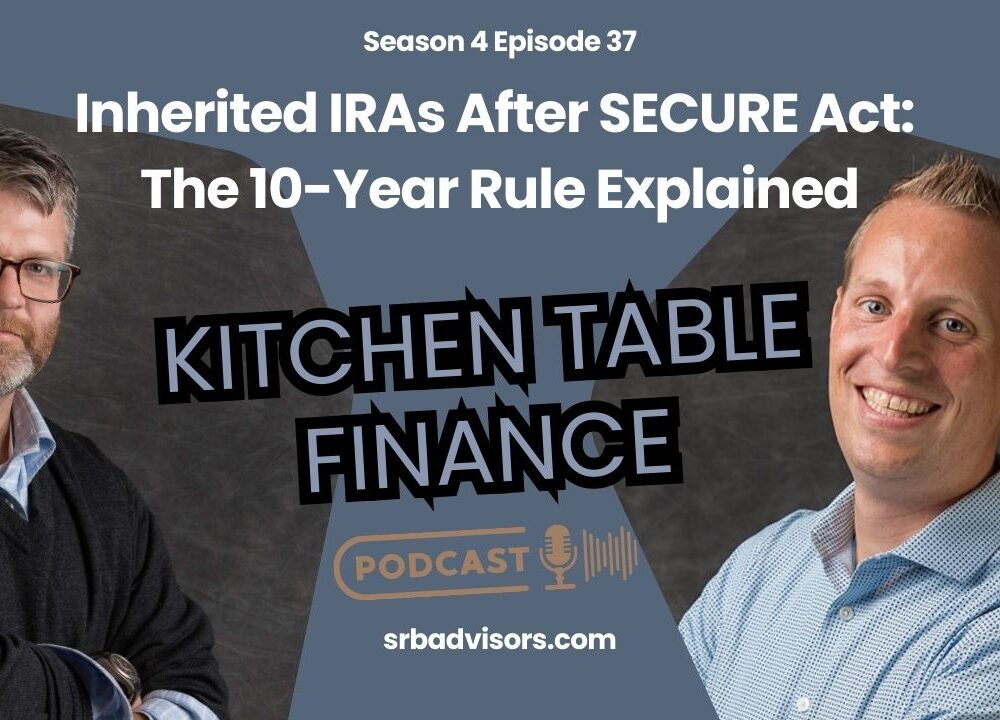Why Market Timing Doesn’t Work

People often ask us if they should sell their stock investments and “wait until the market is better.” Market timing as a strategy does not work.
In addition to this article, check out our podcast episode on the topic of Marketing Timing.
Markets are Generally Efficient
That means all the news that is available to the public is built into current market expectations almost instantly. As new information becomes available, indicating that the market is underpriced or overpriced, prices adjust to the new data. As an individual, deciding to get out of the market and wait to reinvest later means guessing how the market will react to the next wave of news.
It isn’t hard to find examples of this phenomenon. Pick a piece of news that the market might focus on, such as a company earnings report or economic data like the Consumer Price Index. Before the news is released, the price of the stock or the overall market reflects every market participant’s expectation. When the news is released, the market adjusts almost instantly to the new reality and what it might mean for the future. Trying to time the market around such news means you are guessing the other market participants have pushed the price too high or too low. Put another way if we think of the current market price as the average consensus, to beat the market consistently we’d have to be above average with our timing most of the time. Most people cannot be above average – that’s how averages work.
The human brain is programmed to look at the past and see patterns. The news and the market’s reaction to it seem inevitable in hindsight, but to time the market successfully requires an amount of foresight that is little more than guesswork. You may get lucky – and you need to get lucky both in determining when to sell and when to buy back in – but luck can’t be counted on in the long – run.
Getting Back Into the Market
When it comes to market timing, remember that you not only need to know when to get out of the market but also when to get back into the market. People generally want to get out of the market following pullbacks, so the folks at Clearnomics ran an analysis of how getting out of the market after -2% pullbacks and waiting for specified periods of time before reinvesting would have affected returns. They show that, for the last 25 years, if you had invested $1000 in the S&P 500 and remained invested, you’d have $3,471 as of 9/12/2022. If you sold your investment every time there was a -2% drop in the market and waited just a week to buy back in, your ending value dropped to $1818. Waiting longer periods had similar results.
Moving out of the market when volatility strikes may mean missing more down days, but often means missing at least part of the market recovery as well. Missing the worst days in the market may well mean missing the best days, too, as they often follow on the heels of the bad days.
Analytical Strategies
Rather than gut feeling, what about analytical strategies that try to predict when it is time to sit on the sideline and when to get back into the market? Most of these strategies rely on measures of market momentum, based on the idea that once markets start moving in a particular direction they will continue in that direction for a period. An example of such a strategy is using the market’s 50-day moving average and the 200-day moving average, investing when the 50-day crosses above the 200-day moving average and selling when it drops below. There are many different combinations of averages and other measures of momentum that are deployed in these strategies. Other strategies look for chart patterns that indicate when a price has peaked or bottomed out.
Analyzing these strategies objectively is tricky. Proponents of technical analysis can find time periods and use indices where the strategies work well, while detractors can do the same and find the opposite. So far, none of the strategies appears to work consistently well through all time periods and with all investments. Emmanuel Marot of Seeking Alpha published an article in 2017 on the Seeking Alpha Blog where he analyzed ten such strategies over long time periods to quantify their effectiveness. What he found was that while some strategies worked better than others, all had the effect of underperforming the market but with lower drawdowns during the bad times.
By forcing a sale of investments after a market drop begins, these market timing systems can protect a portfolio from extreme drops. But these systems also mean getting back in the market after it has started to rise again, rather than at the bottom. The main result is that these strategies may make you feel better about your portfolio – you may avoid the worst of a bear market – they also mean you miss out on a portion of the recovery, generally offsetting the benefit.
As an added wrinkle, not only would you have to find a strategy that works consistently, but you’d also need to find it BEFORE it becomes popular. Bear with me: once a strategy catches on with a lot of investors, its validity becomes muted and eventually goes away. If everyone sells and buys in response to the same signals, the prices begin to fluctuate reflecting those trades and dampening any timing advantage the signals provide. Over time a successful strategy becomes a victim of its own success.
Feeling Better vs. Performing Better
We need to recognize the difference between FEELING better about our portfolio (i.e., not taking risks during volatile markets) and the portfolio PERFORMING better over time. As advisors, it would be very easy to give in to the temptation of making changes whenever the markets become volatile. Clients would probably thank us for it, and consider it proactive, even if the cost in overall return means in the long – run they’ll be worse off. There is no free lunch: the only way to make higher returns over time is to take risks, and any strategy, or product, that claims to limit risk comes with a cost that may provide comfort but will hurt returns in the long run. The best strategy over the long – haul is to build a portfolio that is suited to your risk tolerance and your future money needs and accept the fact that there will be good times and bad times in the markets. In the long – haul, it is time in the markets that matters, not timing the markets.
About Shotwell Rutter Baer
Shotwell Rutter Baer is proud to be an independent, fee-only registered investment advisory firm. This means that we are only compensated by our clients for our knowledge and guidance — not from commissions by selling financial products. Our only motivation is to help you achieve financial freedom and peace of mind. By structuring our business this way we believe that many of the conflicts of interest that plague the financial services industry are eliminated. We work for our clients, period.
Click here to learn about the Strategic Reliable Blueprint, our financial plan process for your future.
Call us at 517-321-4832 for financial and retirement investing advice.
Share post:
